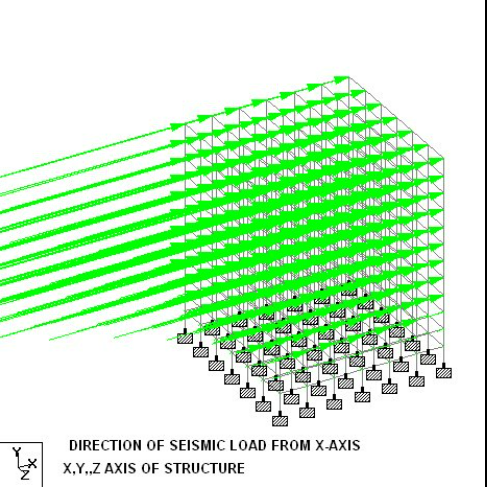A structural load could be of any form say force, acceleration, or displacement. The structural load introduces stress in the building or structure in any form of tensile, compressive, torsional, shear, or bending stress.
Different types of loads acting on structures and buildings must be calculated accurately to analyze the stresses induced correctly. A structure must be designed to withstand all the anticipated stresses and stay safe for the occupants.
Following are different loads acting on structures and buildings.
Dead Load on Structure
This is a vertically downward load because of gravity. A load of structural members like beams, columns, slabs, flooring, staircases, fixed furniture, parapets, and a load of all the walls and skirtings is considered in this type. A load of fixed furniture is also calculated in dead loads.
Generally, a dead load is considered as having a fixed position in the building or the structure and do not change its loading intensity over time. This dead load is ultimately get transferred to the foundation.
Live Load on Structure
All the moving load that a structure is supposed to be experiencing in its operation time is called live load. The consideration of live load for design is done by assuming it as a uniformly distributed load.
The calculation of live load is done by taking it as a KN / m2.
Wind Load on Structure
This is essentially a horizontal load that acts on a structure. For low-rise buildings and comparatively small buildings and structures, this load is not of concern for analysis.
The consideration of wind load becomes more and more in the case of high-rise buildings, skyscrapers, and bridges especially cable-stayed bridges and suspension bridges. The dam structures, radio or TV antennas, and transmission line towers also experience heavy wind load. Thus, they should be designed accordingly them.
Indian standards have stipulated how to analyze and design wing load in IS 875 (part 3) – 2015.
Earthquake Load
It is an impulsive horizontal load that a structure experiences during an earthquake. As per Indian standards, all framed buildings should be designed for earthquakes.
The intensity of earthquake load depends on many things. Some of these are, the height of the building, design of the foundation, structural configuration, magnitude of the earthquake, distance from the epicenter, and focal depth of the earthquake.
Also Read – IS 4326-2013 Earthquake Resistant Design And Construction Of Buildings [PDF]
Snow Load
Snow load becomes essential to study in countries like Canada or America. In the hot regions of India, it is not necessary to design building structures for the snow load.
Also Read – IS 875 – Calculation of Loads on Building [PDF]
Relevant post on building construction
What Is RCC? Properties And Uses Of RCC
Download NBC 2016 – Volume 1 & Volume 2 [PDF]
Bricks & Brick Masonry [Building Construction]
The brick masonry has a weight of 20 KN per Cubic Meter.
The RCC has a unit weight of 25 KN per Cubic Meter.
